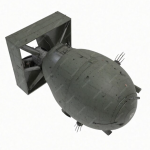PCB assembly is a fundamental process that weaves innovation and functionality in the complex world of electronics. The systematic placement and soldering of electronic components onto a printed circuit board, or PCB, is known as PCB assembly. PCBs are the foundation of numerous everyday devices. This article aims to elucidate the fundamentals of PCB assembly, including its importance, working methods, and pivotal function in contemporary technology.
Comprehending PCB Assembly
PCB assembly is adding electronic components to a blank PCB to build a working circuit. These parts, which can be anything from sophisticated integrated circuits to resistors and capacitors, are all essential to the overall operation of the electronic gadget. To guarantee the seamless integration of these components, the assembly process is a thorough dance that is precisely choreographed.
Important PCB Assembly Components:
Printed Circuit Board (PCB): The china pcba is the base of an electronic circuit and is used to mount and connect different electronic components.
These make up the circuit’s working parts and consist of integrated circuits, resistors, capacitors, diodes, and transistors.
An essential substance that establishes a trustworthy electrical connection between the PCB and the components is solder.
When flux is used during the soldering process, it encourages the flow of molten solder and inhibits oxidation.
Techniques Used in PCB Assembly:
Through-Hole Assembly: Traditionally, through-hole assembly entails soldering components through holes piercing the PCB on one side of the board after mounting them there. This technique is frequently used for parts that need greater mechanical strength.
Electronic components are mounted directly onto the PCB’s surface using surface mount technology (SMT). This approach makes it possible to use lighter, more compact devices.
Mixed Assembly: By combining aspects of SMT and through-hole, mixed assembly takes advantage of each technique’s advantages to support a wider variety of components.
The method used to assemble PCBs:
Design Preparation: The PCB design is carefully created using specialized software to determine the placement of components and traces before assembly starts.
Component Placement: This stage precisely places components on the PCB by hand or using automated pick-and-place machines.
Soldering: Heat is used to melt solder, forming strong electrical connections between PCB components.
Inspection: A thorough visual inspection and automated testing are carried out to find and fix any flaws or abnormalities.
Quality Assurance: Strict quality control procedures guarantee that the assembled PCBs fulfill the required specifications and function dependably.
PCB Assembly Significance:
Efficiency and Precision: The creation of small and effective electronic circuits is made possible by PCB assembly, which helps to shrink devices.
Mass Production: Manufacturing can be streamlined using the same assembly method for mass production after a prototype has been successfully assembled and tested.
Technological Progress: The development of china pcba assembly methods has opened the door for improvements in electronics, allowing for the production of ever-more complex and potent gadgets.
In summary:
PCB assembly plays a central role in the technological symphony, harmonizing the components that drive our networked world. Modern innovation is greatly influenced by the accuracy and productivity of PCB assembly, which is used in everything from simple devices to intricate electronic systems. The art and science of PCB assembly continue to be at the forefront as we push the boundaries of what is possible, forming the electronic tapestry that characterizes our era.





